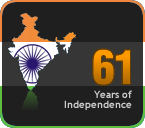Filing the income tax return is a very easy process. You are required to file a return of income, if your taxable income during the year has exceeded Rs. 1,50,000 (Rs 1,80,000 in case of women and Rs 2,25,000 in case of senior citizens).
This is what you need to do:
Step 1
Please obtain the following documents :
Form No. 16: This form is issued by your employer and contains details of your salaried income, and the amount of tax deducted from that salary.
Form No. 16A: This is issued by Banks, Companies from whom you have received income (Either interest or rent.) the course of the year. This contains details of the income and the Tax deducted by these companies
Summary of all bank accounts/Credit card: This summary will provide information on your income and expenditure, as well as investments for the year.
Details of property owned: If you have bought some property during the year, you will need details of rent received and receipts of municipal tax paid during the year. If you have bought this property on a loan, carry the loan details and a copy of certificate of interest paid.
Sale and purchase bills/documents for investments/assets sold: In case of a large number of transactions, it is advisable that you prepare a statement of sale and corresponding purchase of these investments and arrive at the amount of profit or loss, before actually calculating your taxable income.
Details of tax payments made: This is required only if you have made paid taxes in advance.(Remember 15th Sept, 15th Dec & 15th Mar payments)
Step 2
Now you need to select the correct income tax form (ITR) which is based on the nature of income earned.
For individuals:
Form No. Applicability
ITR 1 Meant for Individuals, who have
a) Income from salary
b) Interest income (taxable / exempt)
c)Family pension
d) Income from agricultural activities
In other words, this form is not applicable in the following situations:
a)Individual having any income (taxable / exempt) other than mentioned above
b)Any brought forward loss of earlier years
c) Any income of other person to be included
ITR 2 Individuals / HUF not having any income on account of carrying out business / profession or on account of being a partner in a partnership firm.
ITR 3 Individuals / HUF who are partner in a partnership firm and does not carry out any other separate business / profession.
ITR 4 Individuals / HUF who is carrying out business / profession under a proprietary concern.
Step 3
Where & How to file your tax returns:
You can file your returns either physically at the department collection centres, or electronically.{Take a print out of the respective ITR form along with the Acknowledgment form and file it with the Income Tax Officer}
In case you have doubts or want to download forms you can visit the Income Tax Department for further details www.incometaxindia.gov.in/
And please do not wait for the last day to file your returns.



